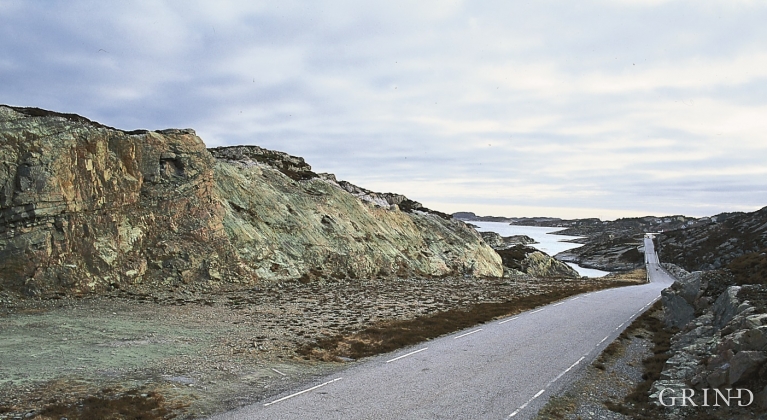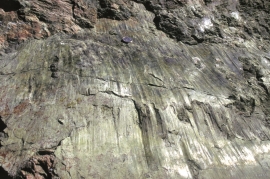Published: 05.08.2015 | Author: Haakon Fossen
EARTHQUAKE FROM DEVONIAN TIME
The earthquake was caused by movements along fault zones in the bedrock where the blocks of rock chafed against each other. In Devonian time, there were many big earthquakes that caused Hordaland to be broken up along fault zones. Some of these faults are visible along road cuts between Tofteøyna and Turøyna islands. Along the Hordaland coast, earthquakes still occur sometimes, though the quakes tend to be weaker.
Throughout the Caledonian collision history, the bedrock got pressed deep down into the mantle. Thereafter, the bedrock got pressed quickly upwards toward the surface again. While the bedrock in Devonian time was still at about 10-15 kilometres depth, on its way up, an earthquake occurred that resulted in the bedrock being shattered. At that time, there were probably many more earthquakes than today. Many of the faults that were created are visible today because the overlying bedrock has been removed. Disintegrating forces such as wind and water, and in the end also ice, have over the course of several hundred millions of years weathered away the bedrock and allowed us now to see what the faults look like at depth.
Few places show the fault surfaces so clearly as along the road that leads to the Turøy Bridge. It has a green coating from the mineral epidote, and many places it has a shiny surface. This is due to the fault movements that rubbed and polished the green mineral grains. The smooth and fine structure is easy to recognize if you run your finger along the fault surface. The stripes show the direction of movement when the earthquakes struck. Age-determination of the faults with the aid of advanced dating methods suggests that the oldest are from the beginning of Devonian time. The smooth-polished surfaces along the road to the Turøy Bridge can in fact be as much as 400 million years old.
Forkasting
Faults are fractures in bedrock the where the ground on one side of the fracture has moved in relation to the ground on the other side. When faults are created, this usually occurs in association with earthquakes. One single fault may have a long history of movement behind it, with many earthquakes. (Haakon Fossen)
- Fossen, H. 1998. Advances in understanding the post-Caledonian structural evolution of the Bergen area,West Norway. Norsk Geologisk Tidsskrift 78: 33–46.




